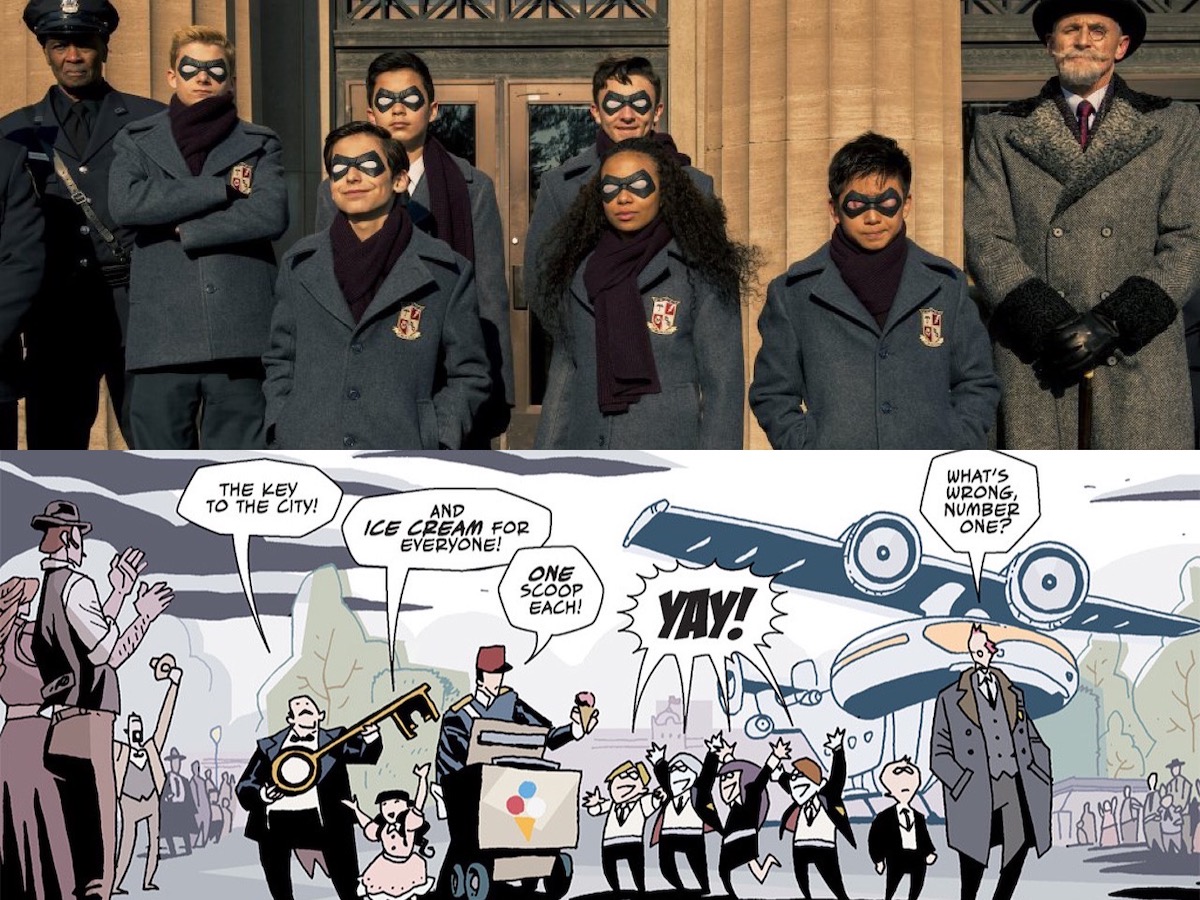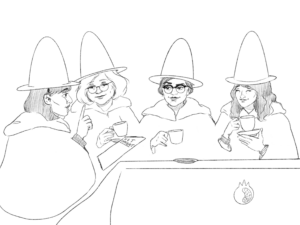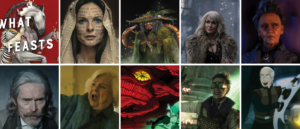When Gerard Way announced he would be writing a comic book mini-series called The Umbrella Academy in 2007, it was fate that I would love it (I played violin, loved comics and MCR’s The Black Parade, so this adoration was a no-brainer in retrospect). Thirteen years later and this mini-series has turned into a full blown comic series, with three separate arcs (Apocalypse Suite in 2007, Dallas in 2009, and Hotel Oblivion in 2019), and a Netflix Original Series that began in 2019. While both the comic series and the Netflix show focus on the adventures of a group of child-heroes-turned-dysfunctional adults, there are some clear differences between the sensibilities Gerard Way and artist Gabriel Bá brought to the comics and how Netflix translated them to the television show.
The Umbrella Academy is all about a group of seven gifted children, born to different mothers at the exact same time in places all around the world, who are adopted by Reginald Hargreeves, an eccentric billionaire. These seven children are molded into crime-fighting machines, mainly through parental neglect on Hargreeves’ part. After growing up and growing apart, the seven are estranged until the death of their adopted father brings them all back together, and simultaneously sets the apocalypse into motion. The seven Hargreeves siblings have their own special powers—from The Rumor’s ability to create reality out of whatever she says, to Seance’s self-explanatory gifts of reaching out to those beyond the grave, to the time-hopping supergenius of Number Five. However, none of their powers can help them face their biggest villain — their own childhood trauma. Over the course of their adventures in the comics, they have to work together to stop the apocalypse, ensure the time-space continuum remains unbroken, and face their failures (and better selves). Yet, the way that the comics deal with these seven super-misfits and their world is somewhat different from the television show.
When I began watching the Netflix adaptation, it became clear that while this show was going to try to be as weird as possible, it could only do so within a specific sense of Netflix-branded weirdness, whereas the comics feel unabashedly, sometimes abrasively weird. Take for instance, the characters of Hazel and ChaCha.

In both the comics and the Netflix show, Hazel and ChaCha are mask-wearing, time traveling assassins, out to deal with the problems Number Five has caused across timelines. That’s about where the similarities end. In the comics, the two are always, always masked, usually on drugs, and gleefully covered in blood. In the Netflix series, they are given a multidimensional yet lighter life, and tend to be painted as long-suffering coworkers who definitely don’t do drugs. Instead, there is plenty of mundane professional small talk and shared strife over their management. A lot more toned down, but it still works in its own way.

In addition to being weirder, I would say that the comics are also a little more eager to lean into their influences—often not in the best way. For instance, the art style of series artist Gabriel Bá is clearly influenced by Hellboy creator Mike Mignola. This is, of course, fitting for a pulpy story that’s all about dysfunctional super-people trying to save the world, but it can also come across as a bit derivative at times. Taking cues from influences like Mignola, pulp stories from the 1940s & 50s, and sci-fi films can be problematic when done without thought or nuance (for example, it’s for the best that Abhijat, Hargreeves’s silent assistant in the comics, is missing from the TV show). Don’t get me wrong, there are plenty of bright spots where this influence gets used well, but sometimes you just want the story to breathe on its own.
The TV show clearly takes from a lot of influences as well, but seems to not let them distract from the story they’re telling with these characters. There are definitely touches of influence present throughout: Wes Anderson and John Hughes come to mind, as well as basically every other sci-fi/superhero trope you’ve come across. But for the most part it manages to create something that’s wholly it’s own (whether or not this always works is a discussion for another time). However, it’s a useful characteristic for The Umbrella Academy’s TV adaptation, since it’s starting to move away from the comics and settle into becoming something different (à la Game of Thrones, but hopefully better).
This brings me to my main quandary: what do these differences and similarities mean for the next season of the show? For starters, I’d argue that the way the last season ended (with the end of the world, but with all siblings en route to somewhere/time else), the potential for weirdness goes way up. Just think about it: there could be visits from dead characters, trips yet again to Vietnam or other points in history the group needs to go to to find redemption, and there’s definitely going to be a lot of continued beef with ChaCha and Hazel. We might get meatier, more meaningful backstories for characters than we did in the comics, too (I’m keeping my fingers crossed for you, Rumor). That alone is something to celebrate, because seeing the TV version of The Umbrella Academy get a little riskier or more subversive with their weirdness would be a treat. As for the influences, perhaps it’s safe to say that for now we can presume that the show will take what it needs (but not too much) and create something unique no matter what.




